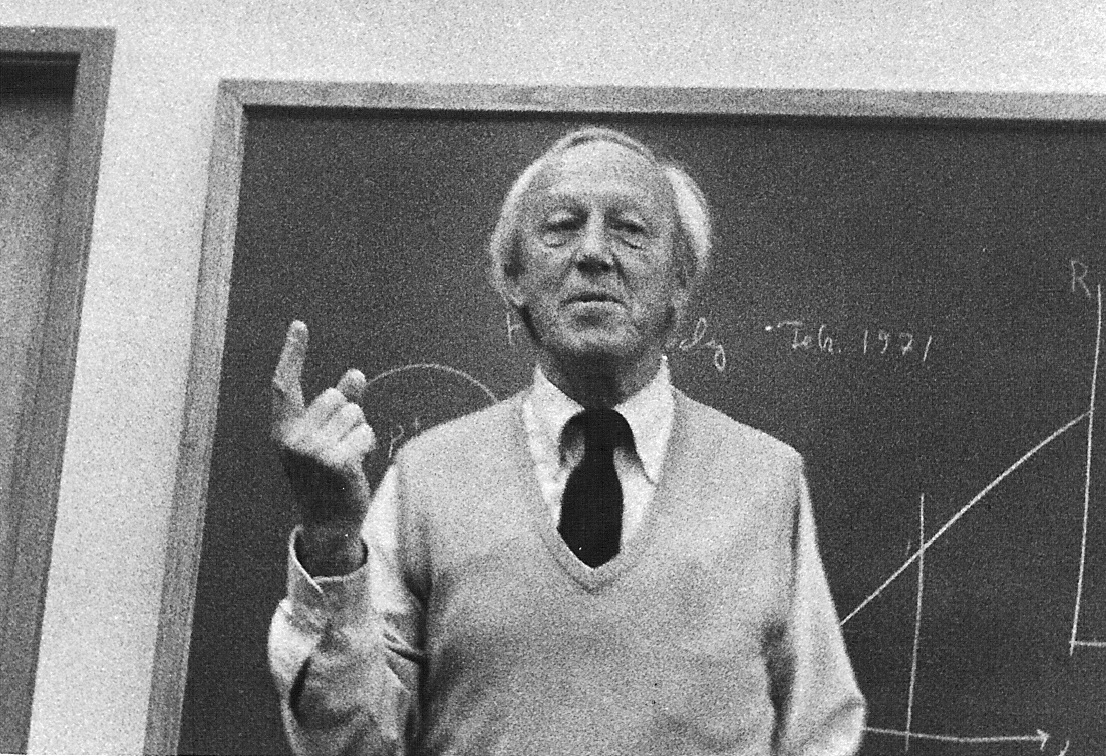He is the founder of plasma physics: Who is Hannes Alfven?
Alfven's name is associated with two concepts in particular: the "equivalent magnetic moment" and the definition of "magnetohydrodynamic forces" that determine the motion of electrically conductive fluids in magnetic fields.

Swedish physicist. He is the founder of magnetohydrodynamics and plasma physics. Hannes Olof Gösta Alfven was born on 30 May 1908 in Norrköping. He attended Uppsala University between 1926 and 1934 and received his doctorate in 1934 with his thesis "Examination of Very Short Electromagnetic Waves". In the same year, he was appointed associate professor of physics at Uppsala University and at the Nobel Institute for Physics in Stockholm.
Hannes Olof Gösta Alfvén (30 May 1908 – 2 April 1995) was a Swedish electrical engineer, plasma physicist and winner of the 1970 Nobel Prize in Physics for his work on magnetohydrodynamics (MHD).
In 1940 he became a professor in the Chair of Electromagnetic Theory and Electrical Measurements at the Royal Institute of Technology in Stockholm. In 1945 he was appointed chairman of the newly established Chair of Electronics at this institute; The chair became the Chair of Plasma Physics in 1963. Accepting the call of the University of California in 1967, Alfven has been continuing his studies in the USA and Europe since then. Alfven, who won many awards together with the 1970 Nobel Prize in Physics and the 1971 Lomonosov Medal of the Soviet Academy of Sciences, is one of the few scientists accepted as a member of the science academies of both the USA and the USSR.
Alfven's first theoretical and experimental studies were on electric vehicles such as electrometers and high-voltage generators. He soon turned his attention to cosmic physics and after 1930 became interested in electric fields and current systems in the cosmic dimension. This two-pronged approach has yielded very positive results in both electricity and cosmic physics. In the basic theory of electromagnetism, Alfven's name is associated with two concepts in particular: the "equivalent magnetic moment", which determines the motion of electrically charged particles rotating in magnetic fields, and the definition of "magnetohydrodynamic forces", which determine the motion of electrically conductive liquids in magnetic fields.
Alfven coined the concept of the equivalent magnetic moment in 1939, based on a new theory of aurora and magnetic storms that appear at night in the form of a gauze curtain near the poles. It was an innovation with positive results that he showed that the subject could be approached with simple concepts such as the motion of an equivalent magnet instead of the complex analysis of particle trajectories in magnetic fields. Indeed, after Alfven applied this method to explain the movement of electrically charged particles in the Earth's magnetic field during aurora and magnetic storms, other scientists took the same approach to theories explaining the formation of cosmic rays in the Solar system and interstellar space. Another field of application of the concept of equivalent magnetic moment is in theories of the physical state of the dilute ionized gas that surrounds the Sun and fills the entire Solar system.
Laboratory studies on the equivalent magnetic moment were also applied to fields such as nuclear technology and electronic computing in the early 1950s. In the following years, the concept of the magnetic moment played a major role in the examination of magnetic mirrors used in plasma physics experiments and gradually using these mirrors in controlled nuclear fusion reactions. Examples are the detection of regions inaccessible by particle trajectories in magnetic fields and the analysis of magnetic compression applications in various field configurations.
Alfven's work on the magnetohydrodynamic phenomenon, one of his most important discoveries, coincides with 1942. In developing a theory of sunspots, Alfven showed that when a sufficiently electrically conductive liquid is diffused into a magnetic field, magnetic field lines move with particles of liquid, just like Kelvin eddies in fluids. The magnetohydrodynamic effect, seen in both liquids and gases, significantly changed the dynamic properties of the liquid as soon as electrical conductivity and magnetic fields were involved. As Alfven first proved, in such cases the electrodynamic and mechanical forces could not be considered separately; because the interaction of these forces could create previously unknown phenomena.
Alfven first considered these effects in the form of magnetohydrodynamic waves in an incompressible fluid. Theories that emerged from these studies were later expanded to include compressible liquids and ionized gases, as well as shock waves and supersonic flows. The reality of the magnetohydrodynamic phenomenon has also been confirmed by various laboratory and space experiments. Today, "Alfven velocity" is used in plasma physics, just as the speed of sound is used as a unit in gas dynamics.
Thus, in the early 1950s magnetohydrodynamics became a branch of astrophysics. Magnetohydrodynamics has found application in the theory of sunspots, the source of the Earth's and Sun's magnetic fields, and the properties of interplanetary dilute plasma in the Solar system. Much of Alfven's original work in this area has been collected in two editions (1950 and 1963) of Cosmical Electrodynamics.
WORKS (mainly):
Cosmical Electrodynamics, 1950,
On the Origins of Solar Systems (with Faekhammer), 1954,
Cosmical Electrodynamics: Fundamental Principles, 1963,
Worlds-Antiworlds, 1966,
The Jale of the Big Computer, 1968,
Atom, Man and the Universe, 1969,
Living on the Third Planet (with K. Alfven), 1972,
Cosmic Plasma, 1981.
